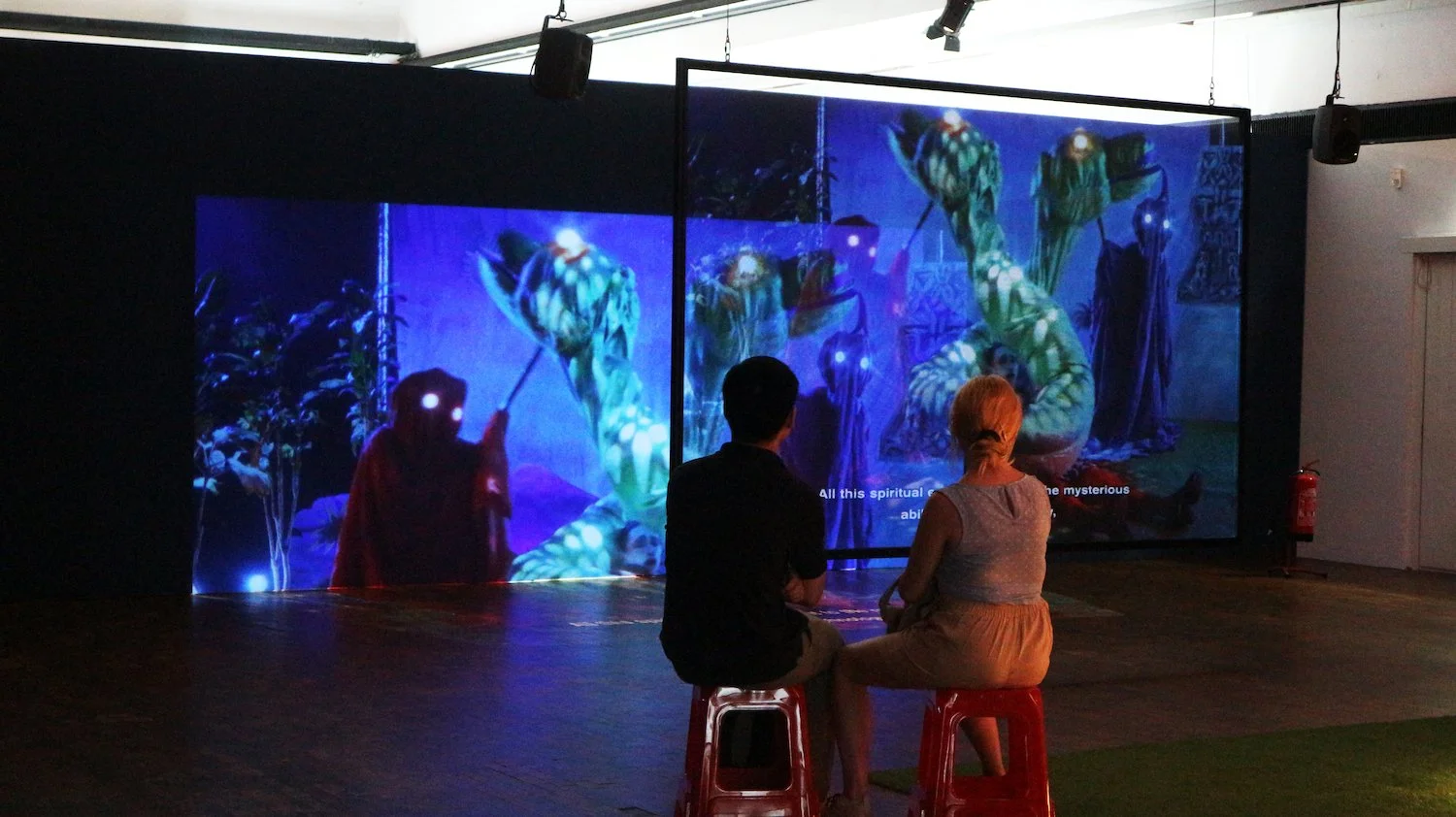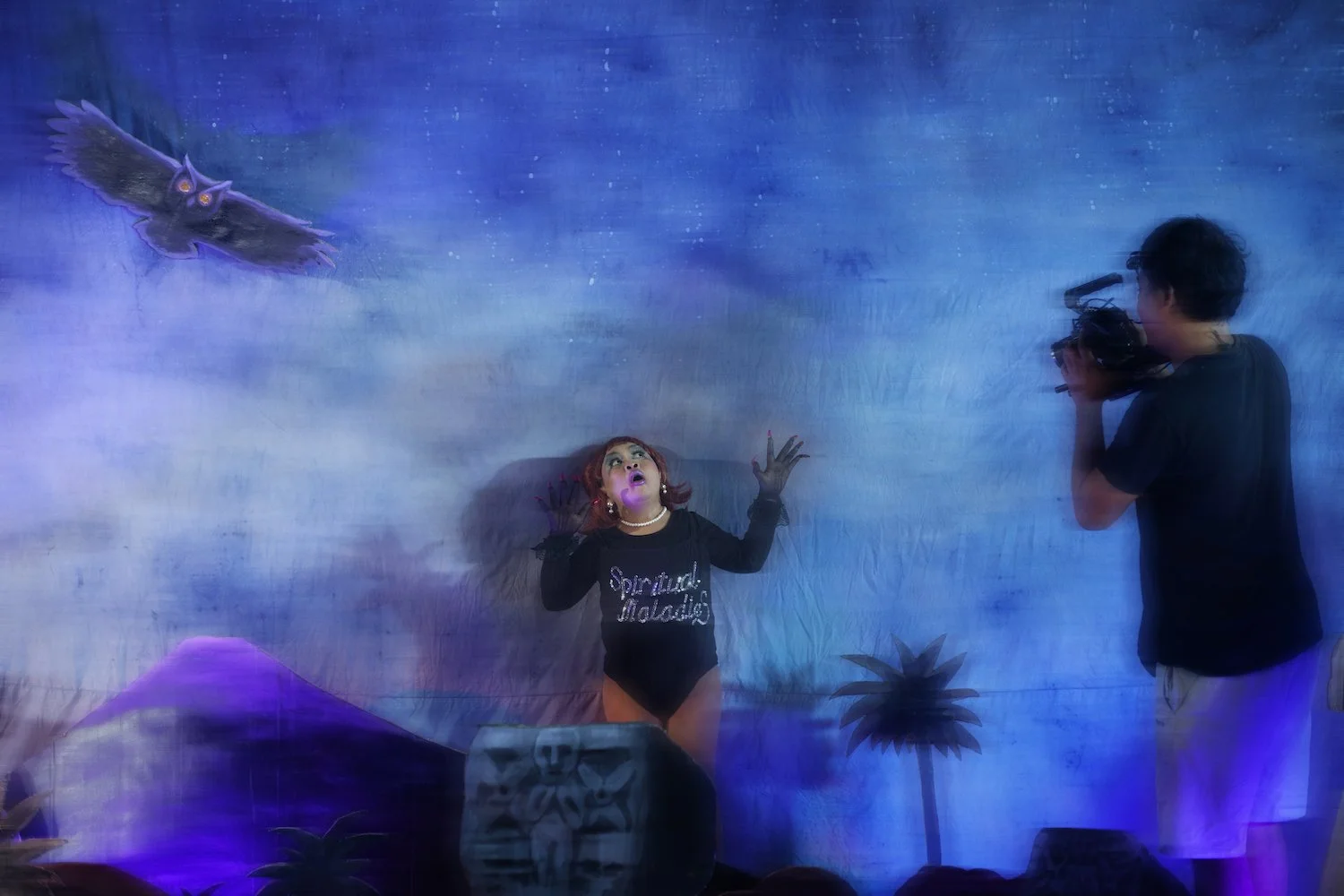A Day in the Life: Natasha Tontey
Rethinking ecological problems and overconsumption
A Day in the Life is a series by A&M where we invite artists to share a day in their life through images accompanied by brief descriptions.
Natasha Tontey, 2022. Photo by Leandro Quintero.
Natasha Tontey is an Indonesian artist based between Jakarta and Yogyakarta. Her work explores historical, mythical, and ancestral knowledge through a contemporary lens to address issues such as ecological crises and gender dynamics. Tontey's practice encompasses digital animations, performances, and installations.
In this series of A Day in the Life, Natasha introduces us to two of her works Other Tomorrows Never Known (2023) and The Order of Autophagia (2021). Both works give an alternate perspective to real-world problems through the concept of speculative fiction. Other Tomorrows Never Known (2023) explores the relationship between caring and relationships with the ancestors, and The Order of Autophagia (2021) speaks about energy recycling in an era of overconsumption.
Natasha Tontey, installation Of Other Tomorrows Never Known, 2023 at Akademie der Kunste Hanseatenweg Berlin. Image courtesy of the artist.
Of Other Tomorrows Never Known (2023) explores the complex nature of care entwined with an urgent need to talk with the ancestors. It also focuses on spirits and how to renew relationships with them—spiritually, materially and technologically. In this work, caring is linked with the need to regain long-overdue respect for indigenous principles, values and beliefs.
This installation was on display at the Akademie der Kunste Hanseatenweg, Berlin, as part of Human Machine/AI Anarchies Fellowship programme.
Natasha Tontey, The Order of Autophagia, 2021. Image courtesy of the artist.
Aside from moving images, I am also interested in making performances or happenings. One of my most memorable works is The Order of Autophagia (2021). It was a midnight dinner party held through Zoom, where guests were invited to consider a perspective on cannibalism that speaks urgently—and with dark humour—to our times. Could the practice of autophagia, where humans self-cycle their energy by eating themselves, challenge our culture of overconsumption and waste?
In this anarchic digital experience, I challenged colonial assumptions about cannibalism and offered a speculative way of thinking about anthropophagy, posing radical solutions to our ecological problems and our bad habit of consumption. This was in homage to Grand Guignol, the gruesome Parisian realist theatre of the 1890s. I created an immersive digital world, and invited guests to attend the performative midnight feast. The audience was invited to dial in (and dine) from their own home, in costume, on faux cannibalistic recipes asthey joined.
As the concept of anthropophagy relates to eating rituals, this work employed a set of performative dinners where the audience was invited to participate in a staged dining ritual. However, the rest of the audience could also see this work as a play where the dramaturgy of perversion subverts into a critical ecological discussion with two aspects that are salient in the play: reconfiguration of cannibalism as a concept seen from anthropological views, and autophagia as a speculative thinking that illustrates madness and biopolitics.
Natasha Tontey, from the film set of Of Other Tomorrows Never Known, 2023. Photo by Yudha 'Fehung' Kusuma Putera. Image courtesy of the artist.
I was born and raised in Jakarta, though both of my parents are from Minahasa. They migrated to the capital due to the political situation, religious conflicts, and lack of job opportunities at the time, which ultimately led to the erosion of Minahasan culture, rituals, spiritualism, myths, and ancestral knowledge in their upbringing. North Sulawesi is the home of the Minahasan people in the northern part of Indonesia. Now, I am based between Jakarta and Yogyakarta, and I am a nomad, most of the time.
Natasha Tontey, The Order of Autophagia, 2021. Image courtesy of the artist.
We are investigating the idea of sustainability in a speculative practice where human can self-cycle their energy-making by auto-eating themselves. This is arethinking of human relationships with nature as a standing reserve, asking the question: what would it be if human could consume their own hair scalps and fingernails for energy instead of animals or plants? The method I use to tell this almost-fictitious narration is through a theatrical approach, with a performative dinner.
Natasha Tontey, 2020. Photo by Leandro Quintero. Image courtesy of the artist.
I have no physical studio, and I feel strangled when I have to stay in one place for too long. When I create works, I focus on reflecting small details of everyday life rather than speculating in the grand tradition of science fiction.
My reference does not only come from field research, theories, or sci-fi books. Most of the time, it comes from a moment of silence where I remember my childhood readings or when a cockroach comes upside down in the corner of my room, raging.
Follow Natasha Tontey on Instagram here and visit her website to see more of her works.






